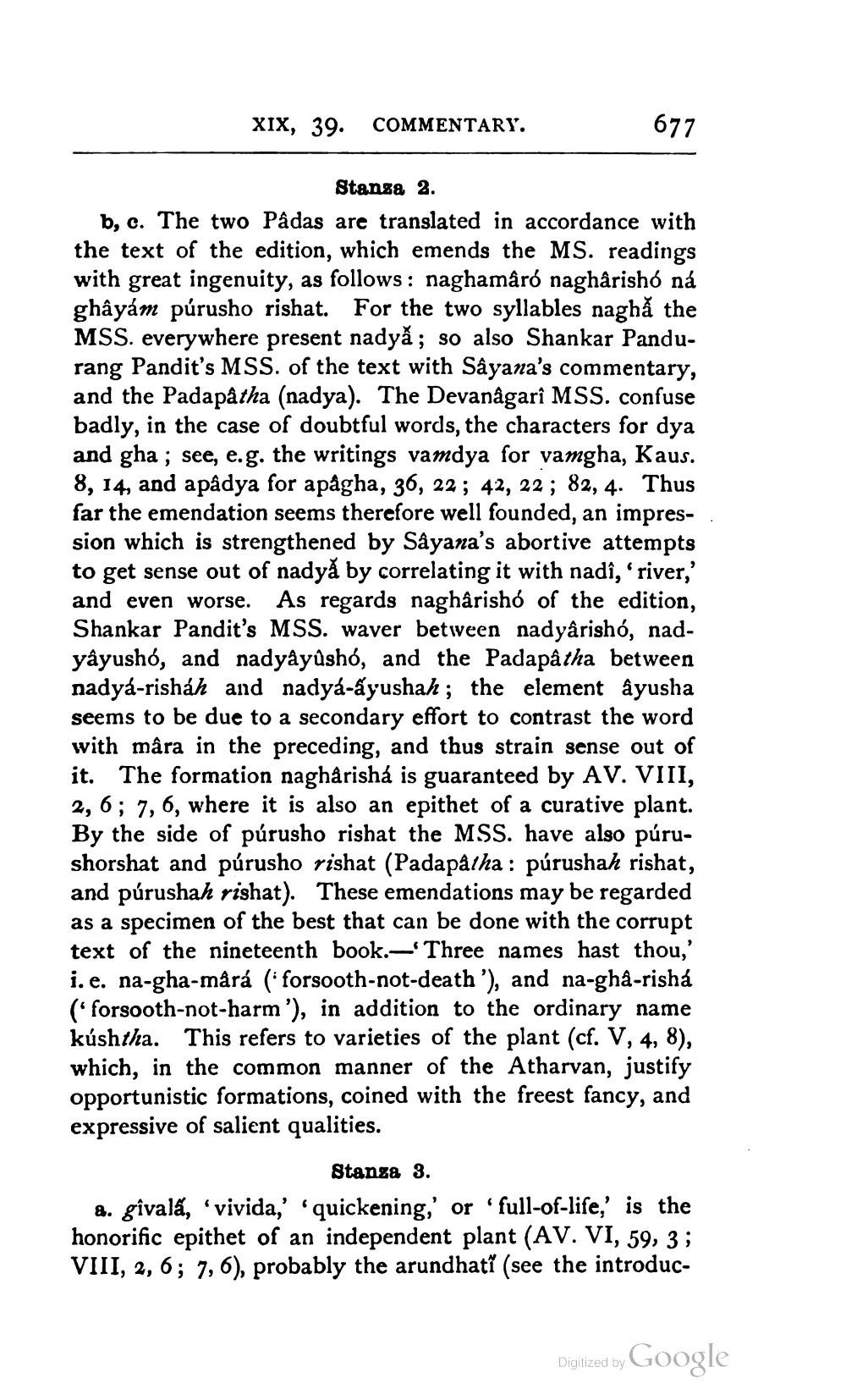________________
XIX, 39. COMMENTARY.
677
Stanza 2.
b, c. The two Pâdas are translated in accordance with the text of the edition, which emends the MS. readings with great ingenuity, as follows: naghamâró naghârishó ná ghâyám púrusho rishat. For the two syllables naghǎ the MSS. everywhere present nadyă; so also Shankar Pandurang Pandit's MSS. of the text with Sâyana's commentary, and the Padapâtha (nadya). The Devanâgarî MSS. confuse badly, in the case of doubtful words, the characters for dya and gha; see, e.g. the writings vamdya for vamgha, Kaus. 8, 14, and apâdya for apâgha, 36, 22; 42, 22; 82, 4. Thus far the emendation seems therefore well founded, an impression which is strengthened by Sâyana's abortive attempts to get sense out of nadyă by correlating it with nadî, ' river,' and even worse. As regards naghârishó of the edition, Shankar Pandit's MSS. waver between nadyârishó, nadyâyushó, and nadyâyûshó, and the Padapâtha between nadyá-risháh and nadyá-ayushah; the element âyusha seems to be due to a secondary effort to contrast the word with mâra in the preceding, and thus strain sense out of it. The formation naghârishá is guaranteed by AV. VIII, 2, 6; 7, 6, where it is also an epithet of a curative plant. By the side of púrusho rishat the MSS. have also púrushorshat and púrusho rishat (Padapâtha: púrushah rishat, and púrushah rishat). These emendations may be regarded as a specimen of the best that can be done with the corrupt text of the nineteenth book.-'Three names hast thou,' i.e. na-gha-mârá (forsooth-not-death'), and na-ghâ-rishá ('forsooth-not-harm'), in addition to the ordinary name kúshtha. This refers to varieties of the plant (cf. V, 4, 8), which, in the common manner of the Atharvan, justify opportunistic formations, coined with the freest fancy, and expressive of salient qualities.
Stanza 3.
a. gîvala, 'vivida,' 'quickening,' or 'full-of-life,' is the honorific epithet of an independent plant (AV. VI, 59, 3 ; VIII, 2, 6; 7, 6), probably the arundhati (see the introduc
Digitized by Google




